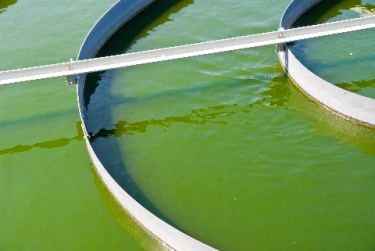
Aurora is far from alone in the algae fuel game. Companies like Sapphire Energy, Solazyme, and Amyris Biotechnologies are sprinting toward the same goal, but each have run into the problem of how to inexpensively and feasibly scale their operations to produce the millions of gallons of fuel needed to chip away at petroleum’s dominance.
[aditude-amp id="flyingcarpet" targeting='{"env":"staging","page_type":"article","post_id":169005,"post_type":"story","post_chan":"none","tags":null,"ai":false,"category":"none","all_categories":"business,enterprise,","session":"A"}']Aurora will use the new money to commercialize its fuels, but doesn’t plan to come to market until 2011 or 2012, as Earth2Tech points out. With $40 million in capital raised, it seems to have enough runway to get it there, but then what? It says it plans to build fuel-producing plants near its algae farms so that they can feed on and recycle the carbon dioxide produced. But $40 million doesn’t seem like enough to make this happen.
Aurora’s one argument for why it will win out over its competitors, is that it has bred a strain of algae capable of generating 125 times as much fuel from the same amount of pond scum. If smaller acreages are needed, it can cut its costs by as much as half, and the company will be able to offer its fuel for cheaper — as low as $55 a barrel — undercutting its rivals and becoming more cost competitive with gasoline.
AI Weekly
The must-read newsletter for AI and Big Data industry written by Khari Johnson, Kyle Wiggers, and Seth Colaner.
Included with VentureBeat Insider and VentureBeat VIP memberships.
But Aurora’s high-yield algae isn’t that original of an idea. Solazyme says it is engineering its own high-efficiency strains that eat sugar and don’t require sunlight — not to mention it has the backing of Chevron and the U.S. Navy.
By comparison, last year at this time, Aurora had just completed an 18-month trial of its pilot plant, and announced development of a second, demonstration-scale facility, which is still underway. That initial pilot was only intended to prove the technology, capable of churning out less than 1,000 gallons of biodiesel a year. It seems like the company has a way to go before its first gallon hits the real-world market.
Based in Alameda, Calif., Aurora raised $5 million in Jan. 2007 and $20 million in June 2008 from Noventi Ventures, Gabriel Venture Partners and Oak Investment Partners — the same firms that provided the recent round of financing.
VentureBeat's mission is to be a digital town square for technical decision-makers to gain knowledge about transformative enterprise technology and transact. Learn More
